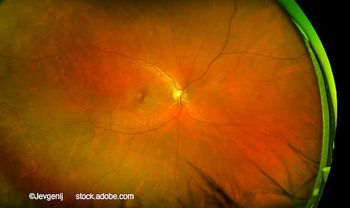
How EHR systems play role in future of clinical decision making
Take-Home Message: Clinicians are on the edge of technology in which expert medical records systems can aid in decision making for treating patients.
By Lynda Charters; Reviewed by Joshua Stein, MD, MS
Ann Arbor, MI-Computer technology has been advancing in leaps and bounds over the two previous decades and the computational abilities continue to skyrocket in all types of computers used ranging from the desktop and mobile levels to the supercomputers, according to Joshua Stein, MD, who speculated that while the most powerful computers now operate at or almost at the level of the human brain, desktop models likely will be at that level by 20/20, and 10 years further down the road Smart Phones will surpass their users.
These exponential leaps have also taken place in clinic settings, with the vast majority of physicians abandoning paper patient charts for electronic health record systems.
“The advantages of the electronic systems include legible documentation of the patient examination, ease of locating information in the chart, ease of communicating with other health providers,” Dr. Stein is associate professor, University of Michigan, Department of Ophthalmology and Visual Sciences, and director, Center for Eye Policy and Innovation, Ann Arbor. However, he pointed out, we are only on the cusp of this technology and despite the availability of powerful computers, physicians are only using them to document the patient visits.
“Is this really enhancing patient treatment?” he asked.
Pushing the health records system
Aiding in the clinical-decision making for patients by the health records system would be a big boon to the care of patients. “An expert system is a computer system that emulates the decision making ability of a human expert. Users input information into the system and the system processes the information and generates advice that the user can incorporate into his or her clinical decision making,” Dr. Stein explained.
Some examples of the contributions of the expert system are by supplementation of the clinician’s knowledge, experience, and expertise and expansion of the clinician’s ability to process large amounts of data in order to facilitate a more informed approach to decision making.
Dr. Stein provided a practical example of how such a contribution might work. At the University of California Davis, an expert system was developed that could alert care providers to the development of early signs of sepsis in critical care patients, which clearly would improve the patient prognosis. “The quicker this life-threatening condition is identified and treated, the better the patient prognosis is,” he emphasized.
When using this system, a staff member enters the patient’s vital signs into the electronic health record, which then in turn are run through an algorithm that had been validated in numerous previous critical care patients. “If the algorithm identifies a group of vital signs that are consistent with early sepsis, the electronic health record system sends an urgent email to the head nurse to order a blood lactate level, initiate a sepsis resuscitation bundle, and communicate this information to the treating physician,” he stated.
As a result, in that institution the mortality rate from sepsis decreased from 47% to 21% over 3 years. The estimate is that more than 200 patients have been saved as a result of implementation of the program, Dr. Stein recounted.
Use in ophthalmology
One suggestion in caring for patients with glaucoma may be to integrate a validated risk calculator into the electronic health records system. When a patient with ocular hypertension is examined, the system can extract the patient’s age, IOP, central corneal thickness, optic disc parameters, and results of parametric testing and move the data into the risk calculator. The physician will then have these data readily available and see the 5-year risk of development of glaucoma and decide with the patient the course of treatment or observation, Dr. Stein commented.
Dr. Stein described another example that he and his associates and colleagues at the School of Engineering at the University of Michigan are currently working on to incorporate an algorithm into the electronic health records system at the Wilmer Institute. The algorithm uses data from large multicenter clinical trials such as the Advanced Glaucoma Intervention Study (AGIS) and the Collaborative Initial Glaucoma Treatment Study (CIGTS) that, he explained, can integrate past results from visual field testing, IOP measurements, and patient sociodemographic characteristics to arrive at a personalized forecast of a patient’s probability of having progression of glaucoma and identification of the optimal time to perform additional diagnostic testing.
“This algorithm learns each patient’s disease dynamics for the first several sets of observations. In subsequent examinations, the algorithm updates the forecast based on the information from the current evaluation, which minimizes noise and optimizes results,” Dr. Stein stated.
He pointed out that by using the algorithm with the patients from the AGIS and CIGTS, glaucoma was detected earlier with fewer tests with improved accuracy.
“The hope is that someday soon the technology can be integrated into our electronic health record and a technician can enter the IOP and the visual field global indices into the electronic health record, allowing the examining physicians to see the forecast for the patient,” Dr. Stein said.
He and his colleagues are also collaborating with the associates at the University of Pittsburgh are fine tuning incorporation of optical coherence tomography into the electronic health record. This tool will be validated in a study of patients with less severe glaucoma; the investigators want to enhance the tool by offering a personalized IOP for each eye of a patient.
In the future, Dr. Stein foresees a shift in the paradigm for electronic medical records from simple repositories of clinical data to portals in which clinicians can enter data that in turn can be processed by powerful computers and actual aid in the clinical decision making for patients with glaucoma and other chronic diseases.
Joshua Stein, MD, MS
Dr. Stein and colleagues have a provisional patent for a glaucoma forecasting tool.
Newsletter
Don’t miss out—get Ophthalmology Times updates on the latest clinical advancements and expert interviews, straight to your inbox.



















































.png)


